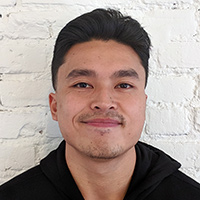From Code School to Software Engineer: How I Got to Build the Future of Serverless with Stackery


In 2017, I decided I wanted to become a developer. I felt that a code school could expose some popular trends in the tech industry, so I enrolled in Epicodus. I picked the first available track, and spent six months learning how to program alongside other aspiring developers. The bootcamp provided our cohort with interesting topics and applications to work on. I was completing the coursework and individual projects, but wasn't spending much time considering what area of development I wanted to work in.
After Epicodus, I applied for any developer position in Portland that had the words “entry-level” or “junior” in the title. I had no preferences for what work I’d be involved with. I focused on large tech companies in the area and had the intention of adopting their methods and learning any tools that they used. The hope was that I would find a subject I was excited about from within the company. As a result, I held positions that I wasn’t interested in because I thought it would help my career and I’d be able to work my way up. I put off exploring my interests while at Epicodus but now I was out of the code school bubble. I wasn’t going to achieve much without an idea of where I wanted to end up.
I invested more time discovering what technologies interested me and what kind of developer I wanted to be. To stay relevant, I started looking into AWS and earned some of their certifications. I learned the ins and outs of services like API Gateway, Lambda, and S3. Eventually, I stumbled upon a tutorial that brought these three together to build a single-page serverless application. When I was done, it was clear that I wanted to focus on.
It felt good to dive into a topic like serverless and realize I wasn't too late to the party. The serverless community was (and still is) uncovering ways to help it reach its full potential. I put together more serverless apps and payed attention to any area that I felt could improve. Each of my projects were prefaced with a hand-drawn diagram illustrating the cloud services I'd be using and how they all interacted with each other. It was my way of planning out the infrastructure and testing my understanding of the services involved. As my applications grew, it also served as a guide to navigate through the hundreds of lines of YAML that needed to be written. It helped shape my opinion that there should be other options for a developer to choose from when deciding how to build a serverless application.
I continued to form my opinions on what serverless development could improve upon and wanted to find any local developers who shared them. I entered the term “serverless portland” into my browser and followed a link that read “Stackery - Serverless Development for Teams".
Landing at Stackery
I was relieved to find an engineering team that was building a toolkit that I wanted to use, but also curious to see how they were building it. So I expressed my interest in an email with some projects attached, and sent it off hoping that I'd receive some feedback. They reached out to me soon after that and I got to hear what problems Stackery was solving. A toolkit designed for teams to improve the way they built serverless applications. Part of me was upset over the fact that I hadn’t found the Stackery toolkit sooner for my own projects. Another part of me was determined to be a part of the solution that I wanted to see in the community.
Follow up discussions got me into the hiring process and I came out the other side a Software Engineer at Stackery. Now I’m a part of a group who share the same drive, and who want to make a positive impact in the tech industry. I wouldn’t be in the position I am today if I hadn’t parted with my initial mindset of “just get a job in tech and you’ll figure out your interests later”. And I’m confident that my work as a developer has more of an impact now because it’s backed by a desire to move serverless development forward. Earning a role on a team like this, in an area of technology that you’re passionate about, should be the goal of every aspiring developer.
Related posts

